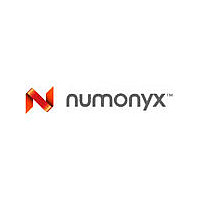NAND16GW3F2AN6E NUMONYX, NAND16GW3F2AN6E Datasheet - Page 45

NAND16GW3F2AN6E
Manufacturer Part Number
NAND16GW3F2AN6E
Description
IC FLASH 16GBIT SLC 48TSOP
Manufacturer
NUMONYX
Datasheet
1.NAND16GW3F2AN6E.pdf
(65 pages)
Specifications of NAND16GW3F2AN6E
Format - Memory
FLASH
Memory Type
FLASH - Nand
Memory Size
16G (2G x 8)
Interface
Parallel
Voltage - Supply
2.7 V ~ 3.6 V
Operating Temperature
-40°C ~ 85°C
Package / Case
*
Lead Free Status / RoHS Status
Lead free / RoHS Compliant
Speed
-
NAND08GW3F2A, NAND16GW3F2A
9.2
performance of valid blocks because it is isolated from the bit line and common source line
by a select transistor.
The devices are supplied with all the locations inside valid blocks erased (FFh). The bad
block information is written prior to shipping. Any block, where the 1st and 6th bytes, in the
spare area of the first page, does not contain FFh is a bad block.
The bad block information must be read before any erase is attempted as the bad block
Information may be erased. For the system to be able to recognize the bad blocks based on
the original information it is recommended to create a bad block table following the flowchart
shown in
NAND flash memory failure modes
The NANDxxGW3F2A may contain bad blocks, where the reliability of blocks that contain
one or more invalid bits is not guaranteed. Additional bad blocks may develop during the
lifetime of the devices.
To implement a highly reliable system, all the possible failure modes must be considered:
Refer to
Table 14.
Program/erase failure
in this case, the block has to be replaced by copying the data to a valid block. These
additional bad blocks can be identified as attempts to program or erase them and give
errors in the status register.
Because the failure of a page program operation does not affect the data in other
pages in the same block, the block can be replaced by re-programming the current data
and copying the rest of the replaced block to an available valid block. The Copy Back
Program command can be used to copy the data to a valid block. See
Random data input during sequential data input
Read failure
in this case, ECC correction must be implemented. To efficiently use the memory
space, it is recommended to recover single-bit errors in read by ECC, without replacing
the whole block.
Table 14
Figure 31: Bad block management flowchart.
Block failure
for the procedure to follow if an error occurs during an operation.
Operation
Program
Erase
Read
Block replacement or ECC (with 1 bit/528 bytes)
for more details.
ECC (with 1 bit/528 bytes)
Block replacement
Procedure
Software algorithms
Figure 8:
45/65











